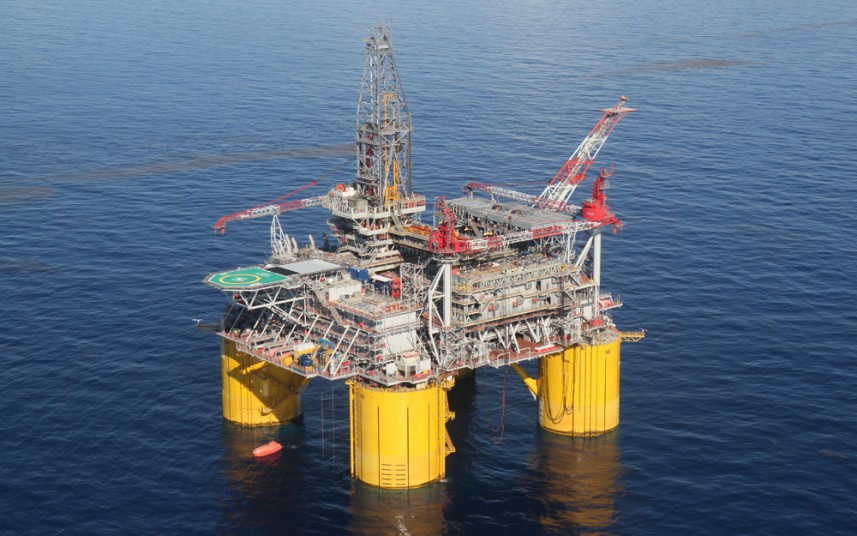Oil prices rise amid Middle East tension
March 27, 2018 | Expert Insights

As tensions rise in the Middle East, the price of oil has gone up once again in 2018. Brent crude futures LCOc1 were up by 5 cents to $70.17 per barrel and U.S. West Texas Intermediate (WTI) crude futures CLc1 were up by 8 cents (0.1%) and reached $65.63.
India, which depends on imports to meet 80% of its oil needs, will have to spend approximately Rs. 9200 crores more every year for a one dollar per barrel increase in crude prices.
Background
From 2010 until mid-2014, world oil prices were around $110 a barrel. However, the price of oil has fallen significantly in recent years. It is now around $50. To address the sluggish prices, OPEC nations came to an agreement in November 2016 to cap their output until the oil glut was reduced. In May 2017, they agreed to extend that deal by nine months. This isn’t the first-time oil prices have been severely hit due to a glut. Prices of oil fell in the 80s due to fall in demand. It resulted in a six-year decline in the price of oil.
In July 2017, the OPEC nations met once more to discuss on whether they should further cap oil output by 1.8 million bpd beyond March 2018. The meeting was held in Russia and was attended by non-OPEC oil producing countries as well. During this meeting, Saudi Arabia, announced that it will limit its oil exports to 6.6 million bpd (barrels per day). This is a million-bpd lesser than the previous year.
OPEC’s October output fell by 80,000 bpd to 32.78 million bpd. OPEC is now adhering to the pledged cuts by 92%. In September 2017, it was 86% in compliance with the deal. In November, due to various factors, the price of oil rose to its highest since mid-2015. Brent crude futures LCOc1 were up 59 cents at $61.53 per barrel having hit a session peak of $61.70 earlier. In December 2017, OPEC as well as Russia announced that the nations would continue to maintain the output cut till the end of 2018.
America has also emerged as a strong player in the crude oil production industry. It has continued to increase its production of shale oil. Research firm Rystad Energy has predicted that the US is likely to ramp up crude oil production by 10% in 2018 to about 11 million barrels per day.
Analysis
On January 2018, for the first time in three years, the price of oil reached a record high of $70 per barrel. The last time oil was valued this much was in December 2014. Sparked partially due to a sharp decline in the global equity markets, oil prices fell for a sixth day on February 9, 2018. The price of Brent oil was at $64.34 a barrel, down from $64.90 and U.S. WTI crude was at $60.53 from $61.25.
Amid rising tension in the Middle East, oil prices rose again in March 2018. According to the latest data, Brent crude futures LCOc1 were up by 5 cents to $70.17 per barrel. They rose by 0.1%t. In addition, U.S. West Texas Intermediate (WTI) crude futures CLc1 were up by 8 cents (0.1%) and reached $65.63.
"Oil prices are on the up driven by rising geopolitical risk in the Middle East," said Stephen Innes, head of trading for Asia/Pacific at futures brokerage OANDA in Singapore. "President Donald Trump continues to suggest the US will pull out from (the) Iran nuclear deal, which raises the spectre of bringing back sanctions on the country and severely limiting Tehran's ability to export crude oil," Innes said.
“For oil, we expect the supply deficit of the past couple of quarters to give way to a surplus, driven largely by strong growth in U.S. tight oil supply,” Britain’s Barclays bank said on Tuesday.
Fears that the Iran deal would be nullified by the US have caused concerns in the Middle East and in turn resulted in the raised oil prices. James Mick, MD and energy portfolio manager at management firm Tortoise stated, “Crude also received support from Opec members as Saudi Arabia and Russia both reiterated goals to extend the production cut agreement.”
Assessment
Our assessment is that oil prices are likely to hover a little over $60 in the near future due to aggressive efforts by the OPEC nations as well as Russia. Increased tension within the Middle East is also driving the cost of oil prices. If Washington were to nullify the Iran nuclear deal, markets will immediately react to the development.
Read more: Oil prices rise, again








Comments